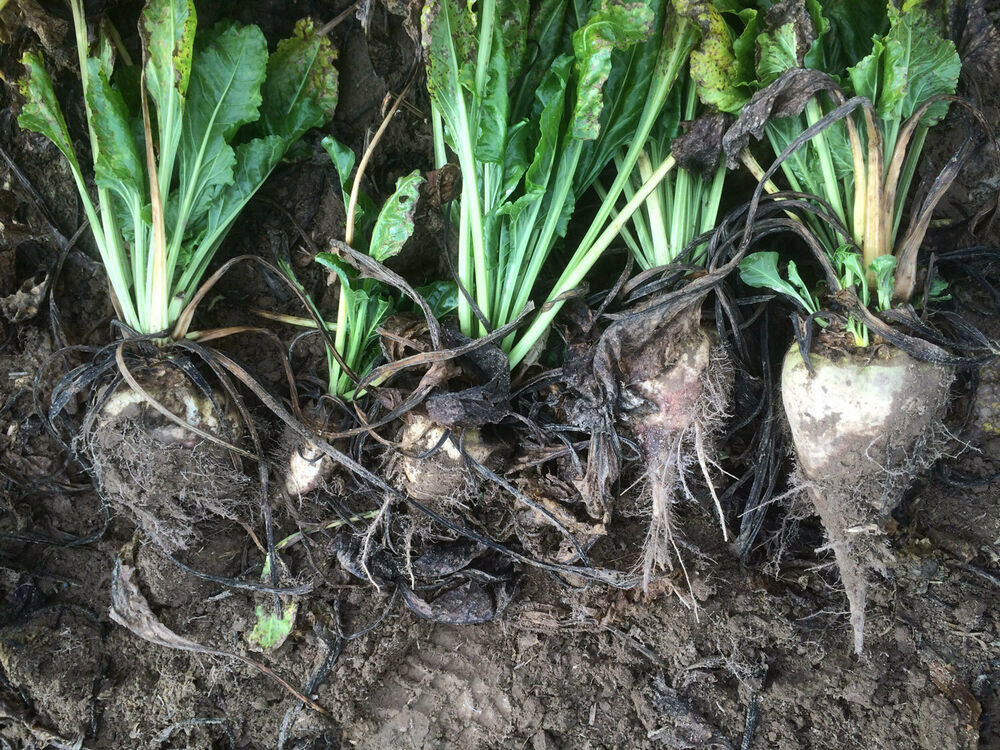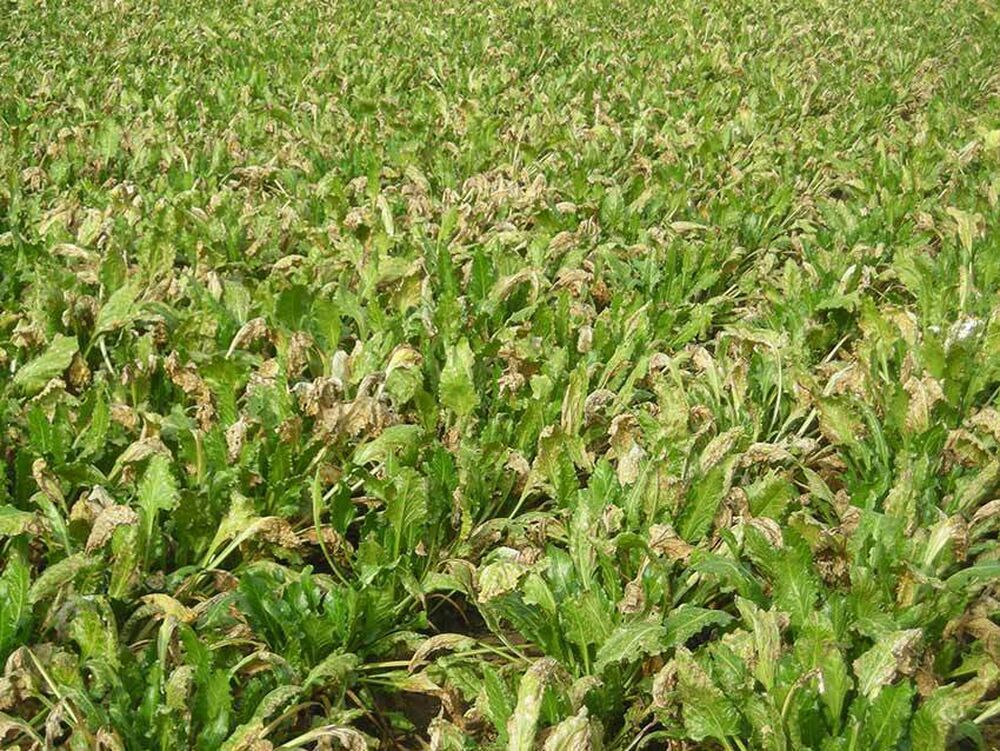Leaf diseases are a group of various diseases in sugarbeet that are caused by fungi that attack sugarbeet leaves.
Four of the most common leaf diseases are:
- Cercospora leaf spot
- powdery mildew
- rust
- Ramularia leaf spot
The symptoms of these leaf diseases generally can be observed during summer until harvest. At the beginning of summer, Cercospora leaf spot and powdery mildew are usually the first to appear, followed by Ramularia leaf spot and rust.


RAMULARIA LEAF SPOT
What are the symptoms of Ramularia leaf spot?
Ramularia leaf spot (Ramularia betae) is a leaf disease with symptoms similar to cercospora leaf spot: it causes white lesions with a brown edge, often containing many tiny white specks (compared to the red/brown lesions with black specks seen in Cercospora). Ramularia mainly affects sugar content.
How is ramularia spread?
Ramularia is found throughout Europe, but it is now less frequent in many regions than in the past. The fungus responsible for the disease favors relatively cool and rainy summer weather and is spread by rain and wind.
How to control leaf diseases such as cercospora, rust, powdery mildew and ramularia?
The protection of the beet against leaf diseases is based on two main pillars:
1. Agronomic measures
- Avoid short crop rotations
- Avoid excessive use of nitrogen fertilizers
- Avoid no-till farming techniques
- Good management of the crop residues in storage areas, which can act as ‘reservoirs’ for fungal spores
- When possible, select sugarbeet varieties that are less susceptible to leaf diseases
2. Crop protection
In some regions, an industry-wide monitoring network reports the presence of leaf diseases. When a disease is confirmed in your area, it is crucial to inspect your fields for signs of infection.
If symptoms are present, growers should confirm whether the intervention threshold has been reached before applying fungicides. It's also important to rotate active ingredients and to avoid applying fungicides too late in the season.

